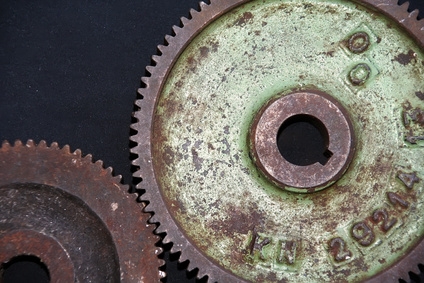
The flexplate is a gear-like metal disk mounted to the torque converter on automatic transmissions. The two are balanced with the transmission to act as a manual transmission flywheel does --- providing momentum. Another function of the flexplate is to mate with the starter motor to crank the engine, accomplished by the gear teeth on the flexplate's outer edge. Flexplate differences include imbalance weight, diameter and tooth count. A combination of these differences must balance with the transmission, so the proper flexplate is of importance; any imbalance will cause vibration and engine damage.
Count the number of teeth on the flexplate. Mark the starting point with a black magic marker and count the number of teeth on the circumference of the flexplate. Standard Ford 289 cubic inch engine flexplates normally come in 157, 164 and 148-tooth options. The 148-tooth flexplates were only used in certain small applications, such as the Mustang II.
Measure the diameter of the flexplate using a machinist's ruler. One of the key differences in flexplates is the diameter, as the flexplate needs to be the right size to mate with the starter motor. The more teeth on the flexplate means a larger plate, however, knowing the exact measurement of the diameter avoids confusion when identifying the proper flexplate required for the engine. The 164-tooth plate, common with 289 cubic inch engines, is 14.25 inches in diameter.
Identify the imbalance weight on the flexplate. The transmission facing side, or back, of the flexplate, contains an imbalance weight. Ford flexplates were imbalanced to 28 ounces, 50 ounces or with no imbalance at all. The window, or rectangular hole, opposite the 50-ounce weight plays into the identification of the 50-ounce imbalance weight.